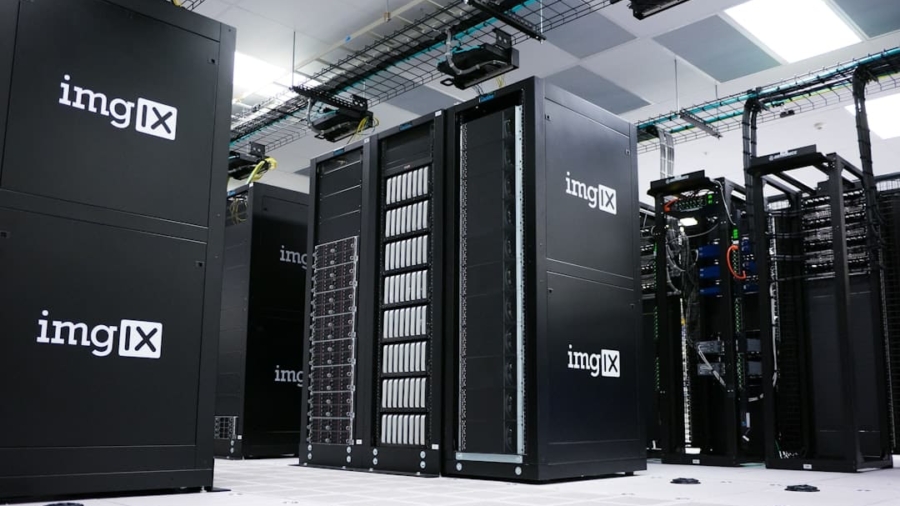Cloud gaming, often referred to as game streaming, is a revolutionary approach to playing video games that leverages cloud computing technology. Instead of relying on local hardware to run games, cloud gaming allows players to stream games directly from remote servers. This means that the heavy lifting—processing graphics, physics, and game logic—is handled by powerful data centers equipped with high-performance hardware.
Players can access these games on various devices, including smartphones, tablets, laptops, and smart TVs, as long as they have a stable internet connection. The concept of cloud gaming is not entirely new; it has been in development for over a decade. However, advancements in internet speeds, latency reduction technologies, and server capabilities have made it more viable and appealing to a broader audience.
Services like Google Stadia, NVIDIA GeForce NOW, and Xbox Cloud Gaming (formerly known as Project xCloud) exemplify this trend, allowing gamers to enjoy high-quality gaming experiences without the need for expensive consoles or gaming PCs. The essence of cloud gaming lies in its ability to democratize access to gaming, enabling players from various backgrounds to engage with the latest titles without the financial burden of purchasing high-end equipment.
Key Takeaways
- Cloud gaming is a service that allows players to stream games from remote servers, eliminating the need for high-end hardware.
- The advantages of cloud gaming include accessibility, cost-effectiveness, and the ability to play on multiple devices.
- Cloud gaming is reducing the need for high-end hardware by offloading the processing and rendering to remote servers.
- The impact on the gaming industry includes the potential for increased accessibility and a shift towards subscription-based models.
- The future of cloud gaming holds promise for improved technology, expanded game libraries, and increased competition among service providers.
The Advantages of Cloud Gaming
Accessibility for All
One of the most significant advantages of cloud gaming is its accessibility. With cloud gaming services, players no longer need to invest in expensive gaming consoles or high-performance PCs to enjoy the latest games. As long as they have a reliable internet connection, even those with modest devices can play graphically intensive titles.
Convenience and Flexibility
Cloud gaming offers unparalleled convenience, allowing players to start a game on one device and seamlessly switch to another without losing progress. This flexibility is perfect for modern gamers who lead increasingly mobile lifestyles. For example, a player can begin a game on their laptop during their commute and continue playing on their smart TV at home.
Unlimited Gaming Options
Cloud gaming services often include a library of games that subscribers can access for a flat monthly fee. This eliminates the need for individual game purchases and allows players to explore a diverse range of titles without financial commitment. With cloud gaming, players can discover new games and genres without breaking the bank.
How Cloud Gaming is Reducing the Need for High-End Hardware

Traditionally, playing the latest video games required significant investment in high-end hardware capable of rendering complex graphics and processing intricate gameplay mechanics. However, cloud gaming shifts this paradigm by offloading the computational demands onto powerful servers located in data centers. This means that players can enjoy cutting-edge graphics and performance without needing top-tier GPUs or CPUs in their own devices.
For example, consider a game like “Cyberpunk 2077,” which demands substantial processing power for optimal performance. In a cloud gaming environment, the game runs on a server equipped with advanced hardware capable of delivering high frame rates and stunning visuals. The player’s device merely acts as a conduit for streaming the video output while sending input commands back to the server.
This not only reduces the need for expensive gaming rigs but also allows players to enjoy high-quality gaming experiences on devices that would otherwise be inadequate for such demanding titles. Moreover, cloud gaming services often handle updates and patches automatically, ensuring that players always have access to the latest version of their games without needing to download large files or worry about system compatibility issues. This further alleviates the burden on local hardware and simplifies the gaming experience.
The Impact on the Gaming Industry
The rise of cloud gaming is reshaping the landscape of the gaming industry in several profound ways. One of the most significant impacts is the shift in how games are distributed and monetized. Traditional models often relied on physical sales or digital downloads, but cloud gaming introduces subscription-based models that allow players to access vast libraries of games for a monthly fee.
This not only provides gamers with more choices but also encourages developers to create innovative content that can attract subscribers. Additionally, cloud gaming has the potential to level the playing field for indie developers. With platforms like Xbox Cloud Gaming and NVIDIA GeForce NOW supporting a wide range of titles, smaller studios can gain visibility alongside major releases without needing extensive marketing budgets.
This democratization of access can lead to a more diverse array of games being available to players, fostering creativity and innovation within the industry. Furthermore, cloud gaming is influencing how developers approach game design. As latency and bandwidth improve, developers are increasingly able to create more complex multiplayer experiences that rely on real-time interactions between players across different devices.
This could lead to new genres and gameplay mechanics that were previously impractical due to hardware limitations.
The Future of Cloud Gaming
Looking ahead, the future of cloud gaming appears promising as technology continues to evolve. One key area of development is the enhancement of internet infrastructure. As 5G networks become more widespread and fiber-optic connections expand globally, players will benefit from lower latency and higher bandwidth, making cloud gaming even more seamless and enjoyable.
This could lead to an increase in user adoption rates as more gamers experience the benefits firsthand. Moreover, advancements in artificial intelligence (AI) and machine learning could further enhance cloud gaming experiences.
Additionally, AI-driven features could enhance game design by creating more responsive and adaptive gameplay experiences tailored to individual player preferences. As major tech companies continue to invest in cloud gaming infrastructure, we may also see an increase in exclusive titles developed specifically for these platforms. This could lead to a new era of gaming where traditional console exclusives are complemented by innovative cloud-based experiences that leverage the unique capabilities of streaming technology.
Challenges and Limitations of Cloud Gaming

Despite its many advantages, cloud gaming faces several challenges that could hinder its widespread adoption. One of the most significant obstacles is the reliance on stable and fast internet connections. While urban areas may have access to high-speed broadband or 5G networks, rural regions often struggle with inadequate connectivity.
This disparity can create a digital divide where only certain populations can fully enjoy cloud gaming services. Latency is another critical concern in cloud gaming. Even with advancements in technology, there can still be noticeable delays between a player’s input and the game’s response when streamed from remote servers.
This lag can be particularly detrimental in fast-paced genres such as first-person shooters or competitive multiplayer games where split-second decisions are crucial for success. Developers must continue to innovate ways to minimize latency while maintaining high-quality graphics and performance. Additionally, data usage is an important consideration for many gamers.
Streaming high-definition games can consume significant amounts of data, which may be problematic for users with limited data plans or those living in regions where data caps are enforced. As cloud gaming becomes more popular, service providers will need to address these concerns by offering solutions that allow users to manage their data consumption effectively.
How to Get Started with Cloud Gaming
Getting started with cloud gaming is relatively straightforward and requires minimal setup compared to traditional gaming systems. First and foremost, potential players should assess their internet connection speed and stability since this will significantly impact their overall experience. Most cloud gaming services recommend a minimum download speed of around 10 Mbps for standard quality streaming; however, higher speeds are advisable for optimal performance.
Once internet requirements are met, users can choose from various cloud gaming platforms based on their preferences and available game libraries. Services like NVIDIA GeForce NOW allow users to play games they already own on platforms like Steam or Epic Games Store by streaming them from powerful servers. Alternatively, platforms like Xbox Cloud Gaming offer access to an extensive library of games for a monthly subscription fee.
After selecting a service, users typically need to create an account and download any necessary applications or clients specific to their chosen platform. Many services also offer free trials or introductory offers that allow users to test out their offerings before committing financially. Once set up, players can start enjoying their favorite games across multiple devices without worrying about hardware limitations.
Comparing Cloud Gaming Services
As cloud gaming continues to grow in popularity, several services have emerged, each offering unique features and game libraries tailored to different audiences. One prominent player in this space is NVIDIA GeForce NOW, which allows users to stream games they already own from various digital storefronts while utilizing NVIDIA’s powerful servers for enhanced performance. This service appeals particularly to gamers who have invested in their game libraries but want the flexibility of playing on lower-end hardware.
On the other hand, Xbox Cloud Gaming provides access to an extensive library of games through its Xbox Game Pass subscription service. This model allows players to explore a wide range of titles without needing to purchase each one individually. The integration with Xbox consoles also enables seamless transitions between local play and cloud streaming.
Google Stadia was another contender that aimed to revolutionize cloud gaming but faced challenges related to its game library and service viability. Despite its initial promise, Stadia struggled with attracting developers and maintaining user interest due to limited exclusive titles and concerns over long-term support. Ultimately, choosing a cloud gaming service depends on individual preferences regarding game selection, pricing models, and device compatibility.
As competition increases among these platforms, gamers can expect ongoing improvements in performance, game offerings, and overall user experience as companies strive to capture market share in this rapidly evolving landscape.
Cloud gaming is revolutionizing the way we play video games by eliminating the need for high-end hardware. As discussed in a recent article from How-To Geek, this technology allows gamers to stream games directly from the cloud, reducing the strain on their own devices. This shift towards cloud gaming is not only making gaming more accessible to a wider audience, but it is also changing the landscape of the gaming industry as a whole.
FAQs
What is cloud gaming?
Cloud gaming is a type of online gaming that allows users to play games through remote servers hosted by a third-party company. Instead of running games on a local device, the game is streamed to the user’s device over the internet.
How does cloud gaming reduce the need for high-end hardware?
Cloud gaming offloads the processing and rendering of games to remote servers, which means that users do not need high-end hardware to run graphically demanding games. The servers handle the heavy lifting, and the user’s device only needs to be able to stream the game and input commands.
What are the benefits of cloud gaming?
Cloud gaming allows users to play high-quality, graphically intensive games on devices that may not have the processing power to run them locally. It also eliminates the need to constantly upgrade hardware to keep up with the latest game requirements.
What are the potential drawbacks of cloud gaming?
One potential drawback of cloud gaming is the reliance on a stable and fast internet connection. Users with slow or unreliable internet may experience lag or poor video quality. Additionally, some users may have concerns about data privacy and security when using cloud gaming services.
What are some popular cloud gaming services?
Some popular cloud gaming services include Google Stadia, NVIDIA GeForce Now, and Microsoft xCloud. These services allow users to stream games to a variety of devices, including smartphones, tablets, and computers.

